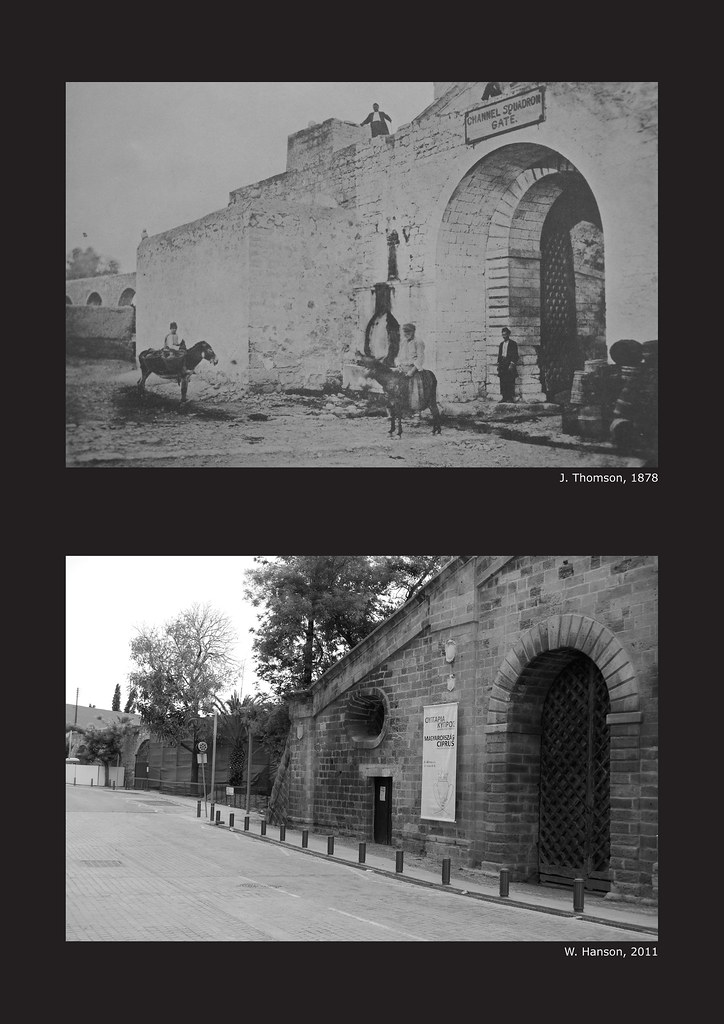More comparison photos from John Thomson's visit in 1878:
Channel Squadron Gate, Nicosia
"Nicosia, the capital of Cyprus, stands in the centre of the island, on the Plain of the Mesorea, four hundred feet above the sea. It is connected with Larnaca by a carriage-road, which has recently been repaired and rendered available for an omnibus that piles daily between the fort and the capital. This road runs direct to the Channel Squadron Gate (so named by British blue-jackets when they took possession).
The wall and gates are strongly built of stone, and are in good preservation, although traces of neglect and decay are to be met with everywhere around. The moslems, as a military people, have made languid and fitful attempts to keep the ramparts in repair, while within the walls they appear to have left nothing worth the cost of a siege.
The air was tainted close to the gateway, for animals were being slaughtered in an enclosed space hard by. The poor, make-shift abodes in the immediate neighborhood are strangely at variance with relics of the ancient magnificence of Nicosia; and the motley crowd that now-a-days passes to and fro through the massive archway, would form a striking contrast to the chivalrous bands that followed in the train of the Lusignan Princes when the town became a royal residence.
A writer of the fourteenth century states that the nobility of Cyprus were, at that time, the richest in the world. But they have passed away, and their wealth and fame are almost forgotten. What of their descendants? The writer heard a poor muleteer (a man of the fine physique and courtly bearing) boast that he was a descendant of one of the most noble families of Cyprus." (Thomson, 11)
On the Ramparts, Nicosia
"It is doubtful whether the ramparts here depicted formed originally a part of the substantial fortifications constructed by the venetians in olden days and still surrounding the town. The pierced wall looks flimsy, and its weakness and insufficiently have evidently been at one time concealed beneath a coating of plaster. For all that, the multitude of empty, harmless embrasures present a formidable front, when we view it from the plain.
Strong as these old battlements undoubtedly are – battlements which, in 1570, enabled the Venetians to withstand a seven weeks’ siege – they would hardly bear the brunt of a bombardment for as many hours by modern artillery. The road from Nicosia may be seen winding across the plain and disappearing over an eminence. The land on both sides of this road was once famed for its fertility, and yet, although it is still most productive, only a patch of the ground here and there is under cultivation. Vast tracts lie fallow, overgrown by thistles, shrubs, and stunted herbage, and affording fodder to flocks of sheep and goats. However, these tracts, as they supply pasturage, can hardly be called waste land. And a few years hence may become the richest farms in the Levant." (Thomson, 16)
Thomson, J. 1985 (1878). Through Cyprus with the Camera in the Autumn of 1878: Volumes 1 and 2. Trigraph Ltd.


No comments:
Post a Comment